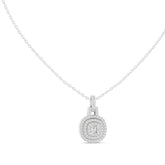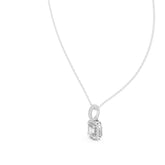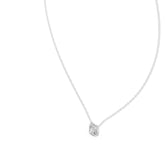Unveiling the Mystique of Sapphire: A Gemstone of Captivating Beauty
Introduction: Nature has endowed us with a treasure trove of breathtaking gemstones, each with its unique allure. Among these treasures, one gemstone stands out for its remarkable beauty and captivating qualities: the sapphire. Renowned throughout history for its brilliance, vibrant hues, and rich symbolism, sapphires have become one of the most sought-after gemstones in the world. In this blog, we will delve into the enchanting world of sapphires, exploring their origins, characteristics, historical significance, and contemporary uses.
-
Origins and Formation: Sapphires belong to the corundum family of minerals and are primarily composed of aluminum oxide. While corundum occurs naturally in a range of colors, sapphires are distinguished by their captivating blue shades. They are formed deep within the Earth's crust under intense heat and pressure. Impurities present during their formation give rise to the various colors seen in sapphires, including blue, pink, yellow, green, and even colorless.
-
Captivating Colors and Varieties: Blue sapphires are the most renowned variety, celebrated for their deep and velvety hues. They evoke feelings of tranquility, elegance, and wisdom. However, sapphires are not limited to blue alone. The fancy sapphire category encompasses an array of striking colors, including the delicate pink of the Padparadscha sapphire, the vibrant yellow of the golden sapphire, and the mystical green of the green sapphire. Each color variant carries its own unique charm and allure.
-
Symbolism and Legends: Throughout history, sapphires have been associated with numerous legends, myths, and cultural beliefs. Ancient civilizations revered sapphires as sacred gems, representing wisdom, power, and divine favor. In many cultures, sapphires were believed to protect against evil spirits, enhance spiritual growth, and promote mental clarity. Royals and nobles cherished sapphires as symbols of authority, loyalty, and good fortune.
-
Historical Significance: Sapphires have left an indelible mark on human history. They have adorned the crowns, jewelry, and regalia of kings and queens, signifying their status and power. The British Crown Jewels feature stunning sapphires, including the iconic Stuart Sapphire. Sapphires have also played pivotal roles in romantic tales, such as the legendary sapphire engagement ring worn by Princess Diana and later passed down to Kate Middleton, Duchess of Cambridge.
-
Contemporary Uses: In the modern world, sapphires continue to captivate with their timeless beauty. Beyond their presence in exquisite jewelry, sapphires find applications in various industries. Due to their exceptional hardness, sapphires are used in watchmaking, as scratch-resistant watch crystals. They are also employed in high-tech applications, such as optical components, lasers, and smartphone camera lenses. Lab-grown sapphires offer an ethical and sustainable alternative to mined gemstones.
-
Caring for Sapphires: To maintain the brilliance and luster of sapphires, proper care is essential. Cleaning sapphires with mild soapy water and a soft brush helps remove dirt and impurities. It is important to protect sapphires from sharp blows and extreme temperature changes. Regular inspections by a professional jeweler can ensure the gemstones are secure in their settings and maintain their radiance for generations to come.
Conclusion: Sapphires, with their timeless allure, continue to fascinate and mesmerize gem enthusiasts around the world. From their origins deep within the Earth to their mesmerizing array of colors and historical significance, sapph






